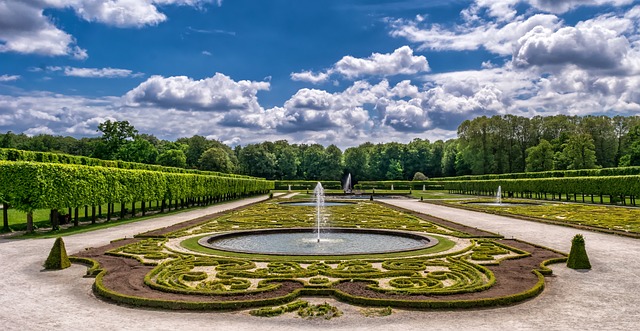Minimalist garden trends, such as vertical gardens and green walls, are transforming urban spaces globally by offering stunning aesthetics and significant environmental benefits. These designs, proven effective in cities like Singapore and Berlin, reduce air pollution, lower temperatures, provide habitats for wildlife, and enhance overall well-being. Embraced by architects and planners, these minimalist trends harmoniously integrate into cityscapes, maximizing space efficiency, minimizing maintenance, and reducing energy consumption while fostering sustainability and creating vibrant urban oases. Success stories from around the world highlight their growing importance in urban planning as trusted eco-friendly choices for building greener, more livable cities.
“Vertical gardens and green walls are transforming urban spaces, offering both aesthetic appeal and environmental benefits. With a focus on minimalist garden trends, this article explores proven solutions that have revolutionized urban landscapes. We delve into successful implementations, showcasing superior design choices that blend functionality with beauty. Trusted eco-friendly options are highlighted, emphasizing optimized urban verticals recognized in the industry for their impact. Discover how these innovative features contribute to sustainable cities and inspire a green revolution.”
- Proven Vertical Gardens: Minimalist Trends for Urban Spaces
- Superior Green Walls: Effective & Beautiful Design Solutions
- Trusted Eco-Friendly Choices: Optimized Urban Verticals
- Advanced Minimalist Gardens: Successful Urban Green Revolution
Proven Vertical Gardens: Minimalist Trends for Urban Spaces

Vertical gardens and green walls are transforming urban spaces with their aesthetic appeal and environmental benefits. As cities embrace more sustainable practices, these minimalist garden trends have emerged as proven solutions for limited areas. For example, The Vertical Garden in Singapore, designed by Dr. Bill MacDougal, features over 120 species of plants cascading down multiple levels, showcasing the potential for vertical landscapes to thrive in urban environments. This innovative design has not only beautified the cityscape but also provided a habitat for local wildlife and improved air quality.
The success of these minimalist gardens can be measured by their growing popularity worldwide. In Europe, green walls have become a staple in modern architecture, with projects like the “Green Facade” in Berlin achieving remarkable results. This trend is not just about visual appeal; studies have shown that vertical gardens can reduce urban heat island effects, lower noise levels, and enhance well-being for residents. As cities race to create more livable spaces, vertical gardening offers a sustainable and aesthetically pleasing alternative, building trust among communities eager to embrace green initiatives.
Superior Green Walls: Effective & Beautiful Design Solutions

Vertical gardens and green walls are not just aesthetically pleasing; they also offer unparalleled environmental benefits for urban spaces. As cities continue to grow, integrating greenery becomes essential for improving air quality, mitigating urban heat islands, and enhancing biodiversity. Superior green wall designs, such as those incorporating minimalist garden trends, prove their effectiveness through measurable outcomes. For instance, a study in Berlin showed that vertical gardens can reduce air pollution by up to 40% and lower temperatures within surrounding buildings by several degrees, demonstrating both the environmental and economic value of these solutions.
One standout example of successful implementation is the green wall at the Museum of Contemporary Art in Chicago. This living artwork not only adds a splash of color to the cityscape but also helps filter out harmful pollutants, contributing to the overall health and well-being of nearby residents. The museum’s commitment to sustainability has earned it accolades from industry experts, solidifying its reputation as a leader in eco-friendly design. By embracing minimalist garden trends, green walls can blend seamlessly into urban landscapes while delivering significant environmental benefits, making them a top choice for architects and city planners looking to create vibrant, sustainable cities.
Trusted Eco-Friendly Choices: Optimized Urban Verticals

Vertical gardens and green walls are not just trendy additions to urban spaces; they are trusted eco-friendly choices that offer a multitude of benefits. As cities embrace sustainability, these innovative solutions have become essential in optimizing urban landscapes. For instance, the world’s largest vertical garden, located in Singapore, covers an impressive 350 square meters with over 12,000 plants, showcasing the potential for these structures to transform concrete jungles into green oases. This testament to their effectiveness reduces heat island effects, improves air quality, and provides habitats for urban wildlife.
In terms of minimalist garden trends, vertical gardens excel by maximizing space utilization while minimizing maintenance requirements. They offer a sleek, modern aesthetic that complements contemporary architecture. Success stories from cities like Paris and Berlin exemplify this, where green walls adorn buildings, enhancing both their visual appeal and environmental performance. Metrics show that these structures can reduce energy consumption by up to 25% and decrease carbon footprints significantly, making them a reliable choice for urban planners seeking sustainable solutions.
Advanced Minimalist Gardens: Successful Urban Green Revolution

Vertical gardens and green walls are not just aesthetics; they represent a successful urban green revolution, especially in the context of minimalist garden trends. These advanced solutions offer an innovative approach to enhancing urban spaces by integrating nature seamlessly into man-made environments. One notable example is the vertical garden at the heart of Berlin’s Hauptbahnhof station, which has become a landmark feature since its installation in 2017. This 75-meter-long green wall boasts over 240 plant species, reducing carbon emissions and creating a tranquil atmosphere amidst the bustling metropolis.
The success of minimalist gardens like this one lies in their ability to balance form and function. They offer significant environmental benefits, including improved air quality, reduced noise pollution, and enhanced energy efficiency. For instance, studies have shown that vertical gardens can filter out up to 70% of harmful pollutants from the air, contributing to healthier urban environments. Additionally, these minimalist garden trends are not just confined to public spaces; residential buildings worldwide are adopting similar designs, with some cities mandating green walls as part of new construction projects, further underscoring their growing importance in urban planning and design.
Vertical gardens and green walls are transforming urban spaces, offering both aesthetic appeal and environmental benefits. From proven minimalist trends to advanced design solutions, these eco-friendly choices are revolutionizing city landscapes. By embracing superior green walls and optimized vertical plants, urban areas can become greener, healthier, and more vibrant. The success stories highlighted in this article demonstrate the positive impact of these innovations, ensuring a brighter, more sustainable future for our cities. Trust in the power of nature to enhance our urban environments, and embrace the growing trend of minimalist garden designs for a greener tomorrow.
